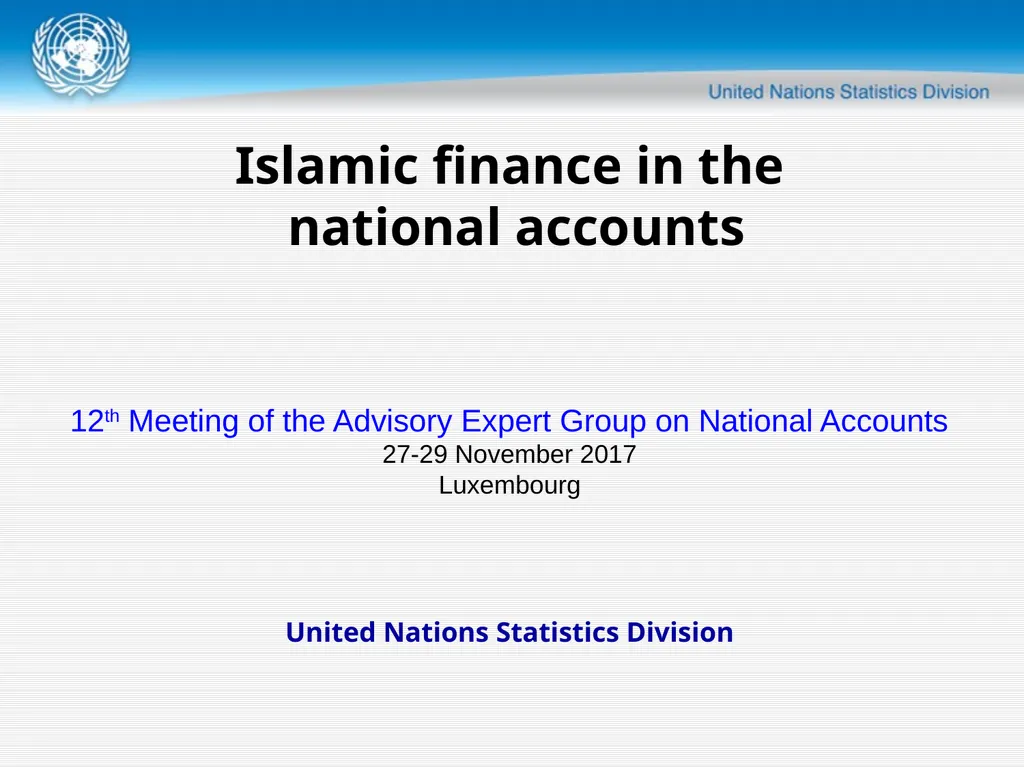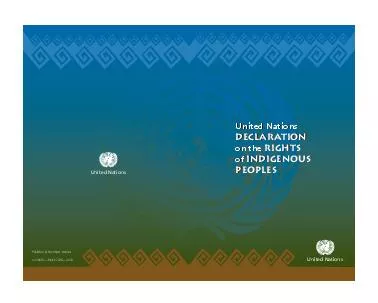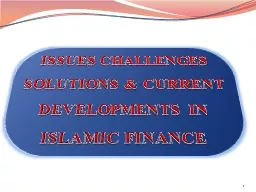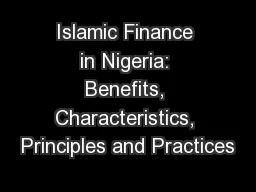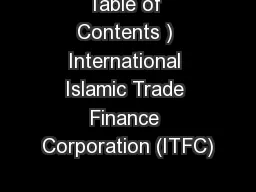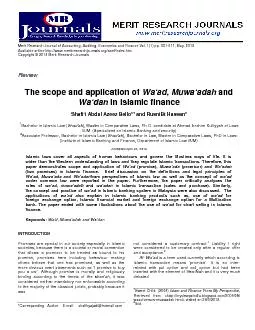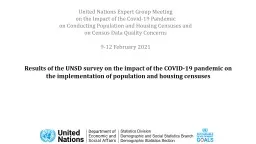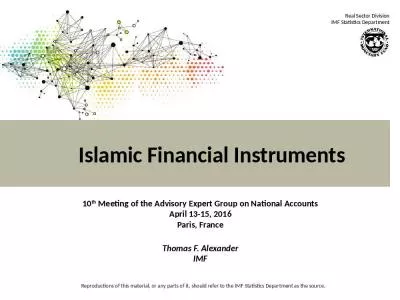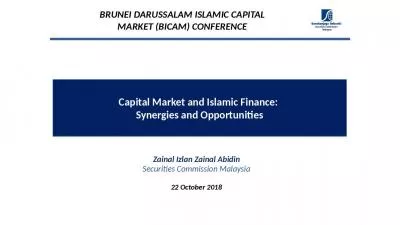United Nations Statistics Division Islamic finance
Author : conchita-marotz | Published Date : 2025-06-23
Description: United Nations Statistics Division Islamic finance in the national accounts 12th Meeting of the Advisory Expert Group on National Accounts 2729 November 2017 Luxembourg Outline of presentation Background Discussions at Ankara workshop Key
Presentation Embed Code
Download Presentation
Download
Presentation The PPT/PDF document
"United Nations Statistics Division Islamic finance" is the property of its rightful owner.
Permission is granted to download and print the materials on this website for personal, non-commercial use only,
and to display it on your personal computer provided you do not modify the materials and that you retain all
copyright notices contained in the materials. By downloading content from our website, you accept the terms of
this agreement.
Transcript:United Nations Statistics Division Islamic finance:
United Nations Statistics Division Islamic finance in the national accounts 12th Meeting of the Advisory Expert Group on National Accounts 27-29 November 2017 Luxembourg Outline of presentation Background Discussions at Ankara workshop Key outcomes Immediate next steps Questions for the AEG 2 Background 11th AEG meeting discussed recommendations of the Task Force on Islamic Finance arising from the Beirut workshop Key recommendation - formation of two working groups Working group on sectorization and classification Working group on data collection and coordination 3 Discussions at Ankara workshop A workshop was organized in Ankara, Turkey, from 31 October-2 November 2018 to discuss Draft classifications of Islamic financial instruments and the corresponding property income Draft sectorization of Islamic financial corporations and methods to calculate output of Islamic financial services Draft diagrams to show the flows between Islamic financial corporations and their clients for various Islamic financial instruments Workshop resulted in a number of key outcomes 4 Key outcomes There was agreement on the proposed recommendations on the classification of Islamic financial instruments and their corresponding property income (see annex 1), except for those Islamic financial instruments which are classified as deposits, loans and debt securities For these three groups of Islamic financial instruments, more research should be carried out on how to reconcile the classification of their property income as interest and the prohibition of interest in Shari’ah law For completeness, the list of Islamic financial instruments should be expanded to include synthetic Islamic financial derivatives 5 Classification of Islamic financial instruments and corresponding property income Key outcomes There was agreement with the diagrams which have been prepared to illustrate the flows between Islamic financial corporations and their clients for various Islamic financial instruments to help better understand how to record these flows in the national accounts (see annex 2) 6 Classification of Islamic financial instruments and corresponding property income Key outcomes There was agreement with the proposed classification of Islamic financial corporations and the corresponding methods to calculate the output of Islamic financial services (see annex 3), except for the output of Islamic financial corporations which are allocated to the deposit-taking corporations except the central bank subsector (S122) 7 Sectorization of Islamic financial corporations and calculation of output Key outcomes For the output of these Islamic financial corporations, more research should be carried out on How interest on loans and deposits can be accommodated in the FISIM formula to calculate the financial
